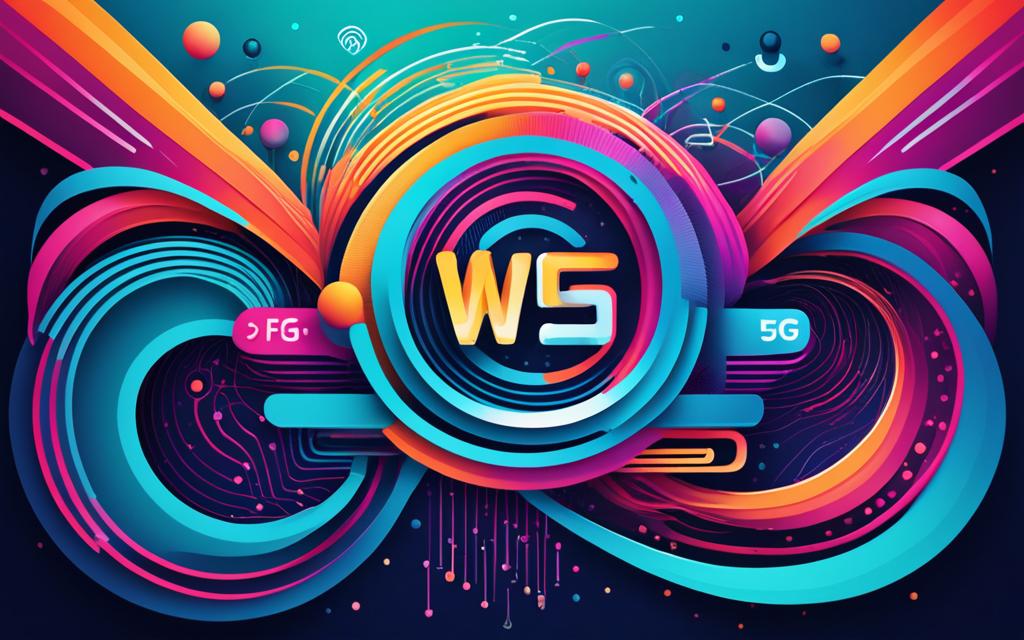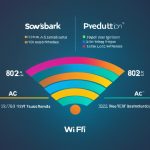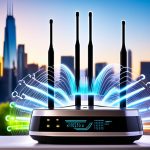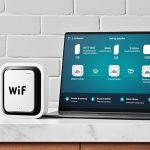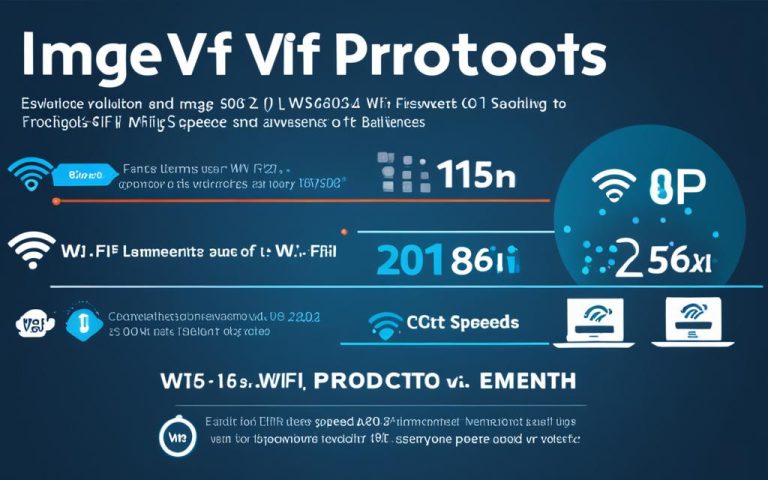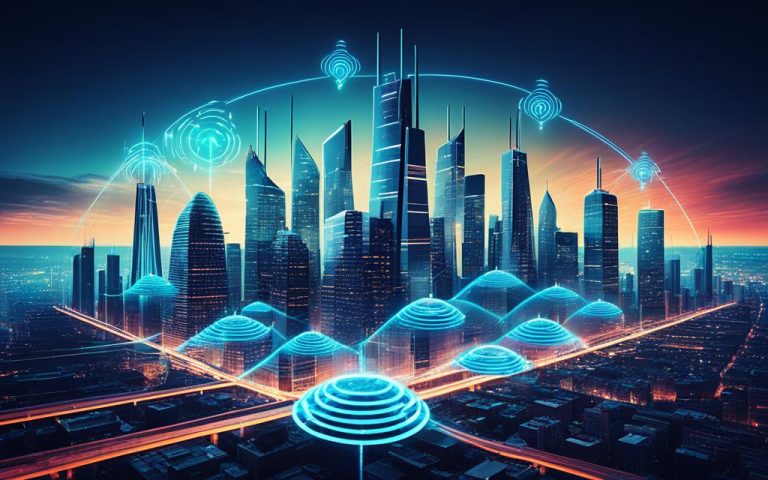The world’s economy is undergoing a significant transformation known as the Fourth Industrial Revolution (4IR). This shift is driven by technological advancements, including artificial intelligence, Internet of Things (IoT), and augmented reality/virtual reality (AR/VR). To support these innovations, high-speed, high-capacity, and low-latency wireless connectivity is crucial.
By the end of 2024, global mobile traffic is projected to reach 131 exabytes per month, highlighting the growing need for networks that can handle massive machine-to-machine communication. Both cellular and Wi-Fi technologies are evolving to meet these emerging demands, with particular emphasis on the pivotal role of 5G.
5G offers a range of new and enhanced capabilities that are necessary for seamless user experiences, IoT support, and critical services such as public safety. For instance, smart factories require advanced remote industrial robotics and real-time digital “twins” to optimize operations. Verizon’s Eight Currencies of 5G, including throughput, energy efficiency, and reliability, position it well for mission-critical use cases, time-sensitive networking, and bandwidth-intensive applications.
While Wi-Fi 6 operates mainly in unlicensed spectrum frequency bands, making it susceptible to interference in noisy environments, it boasts a high adoption rate in home and office LAN settings. In contrast, 5G surpasses Wi-Fi 6 in terms of peak data rates, reliability, and latency. 5G caters to diverse use cases, including mobile, fixed, nomadic, indoor, and outdoor applications.
The future vision for 5G entails improvements in coverage, expanded spectrum capabilities, and an expanded device ecosystem. Such developments unlock the potential to serve various vertical industries, enable ultra-reliable and low-latency communication, achieve improved network densification, and enhance indoor coverage and LAN support. Notably, 5G’s flexibility and scalability pave the way for phased transitions and gradual technology advancements.
The convergence of Wi-Fi and 5G holds immense transformative potential for local area wireless networks. While Wi-Fi remains prevalent in consumer and office settings, Wi-Fi 6 offers enhanced performance for basic enterprise use cases. The future of 5G promises network enhancements, wider spectrum capabilities, and an extended device ecosystem, fostering the emergence of new applications and use cases.
In the following sections, we will delve deeper into the role of 5G and Wi-Fi 6 in addressing emerging use cases and requirements, examining the distinct characteristics and use cases of each technology, and exploring the future possibilities enabled by 5G.
The Role of 5G and Wi-Fi 6 in Emerging Use Cases and Requirements
In the fast-paced digital era, wireless networks play a crucial role in supporting seamless user experiences, enabling the Internet of Things (IoT), and facilitating critical services like public safety. As technology continues to advance, new and enhanced wireless service capabilities are required to meet the evolving demands of various industries. Two key players in this field are 5G and Wi-Fi 6, which are poised to address emerging use cases and fulfil the growing requirements of today’s connected world.
One of the industries that stand to benefit greatly from the convergence of Wi-Fi 6 and 5G is smart manufacturing. For example, in smart factories, the deployment of advanced remote industrial robotics and real-time digital “twins” can significantly enhance operational efficiency. This involves connecting numerous devices, sensors, and systems, and relies heavily on reliable and high-speed wireless communication.
“Verizon’s Eight Currencies of 5G, including throughput, energy efficiency, and reliability, position it well for mission-critical use cases, time-sensitive networking, and bandwidth-hungry applications.”
5G, with its superior quality of service and ultra-low latency, is well-suited to address the requirements of mission-critical use cases and applications that demand high bandwidth. It offers licensed frequency bands, enabling more robust and reliable connectivity. Additionally, 5G introduces the concept of network slicing, which allows for end-to-end quality of service (QoS), ensuring different use cases can be supported on the same network with varying performance objectives. Moreover, the use of licensed frequency bands and network slicing enhances end-to-end security, a crucial aspect in an increasingly connected world.
While 5G offers remarkable capabilities, Wi-Fi 6 also has its unique strengths. Wi-Fi 6 operates on unlicensed frequency bands, making it susceptible to interference in noisy environments. However, Wi-Fi has a high adoption rate in home and office local area networks (LANs) and is well-suited for a range of indoor use cases. In contrast, 5G provides higher peak data rates, improved reliability, and lower latency compared to Wi-Fi 6. It is designed to cater to various use cases, including mobile, fixed, nomadic, indoor, and outdoor applications. Wi-Fi 6, on the other hand, is likely to find application in basic enterprise use cases due to its better performance within confined LAN environments.
The convergence of 5G and Wi-Fi 6 holds immense potential in addressing emerging use cases and fulfilling the evolving requirements of wireless networks. By leveraging the unique strengths of both technologies, industries can take advantage of seamless connectivity, improved user experiences, and enhanced IoT support.
Advantages of 5G and Wi-Fi 6 in Emerging Use Cases
Here are some key advantages of 5G and Wi-Fi 6 in emerging use cases:
- 5G:
- Superior quality of service for mission-critical use cases
- Licensed frequency bands for enhanced reliable connectivity
- Network slicing for end-to-end QoS
- Higher peak data rates and low latency for bandwidth-hungry applications
- Wi-Fi 6:
- Widespread adoption in home and office LANs
- Suitable for various indoor use cases
- Enhanced performance in confined LAN environments
- Accessible use of unlicensed frequency bands
The table below provides a detailed comparison of 5G and Wi-Fi 6 in terms of their characteristics and application areas:
| 5G | Wi-Fi 6 | |
|---|---|---|
| Operating Frequency | Licensed frequency bands | Unlicensed frequency bands |
| Peak Data Rates | High | Lower than 5G |
| Latency | Low | Higher than 5G |
| Reliability | High | Depends on the network environment |
| Application Areas | Mobile, fixed, nomadic, indoor, and outdoor | Mainly indoor |
With their unique characteristics and use cases, 5G and Wi-Fi 6 are poised to shape the future of wireless connectivity. The convergence of these technologies heralds a new era of seamless, high-speed, and reliable wireless communication, paving the way for transformative advancements in industries across the globe.
Wi-Fi 6 and 5G: Different Characteristics and Use Cases
Wi-Fi 6 and 5G are two wireless technologies that have distinct characteristics and find application in different use cases. Understanding the unique features and use cases of each technology is crucial for optimizing wireless connectivity solutions.
Wi-Fi 6 Characteristics and Use Cases
Wi-Fi 6 operates exclusively in unlicensed spectrum frequency bands, which makes it susceptible to interference in noisy environments. Despite this limitation, Wi-Fi 6 has gained significant adoption in home and office LAN environments, where it excels in indoor use cases.
Some prominent use cases for Wi-Fi 6 include:
- Enabling high-speed internet access for home and office users
- Facilitating seamless streaming of high-definition videos and online gaming
- Supporting IoT devices and smart home applications
While Wi-Fi 6 continues to be the go-to choice for consumer and office LAN environments, its performance makes it suitable for basic enterprise use cases as well.
5G Characteristics and Use Cases
5G, on the other hand, offers outstanding features such as higher peak data rates, improved reliability, and lower latency compared to Wi-Fi 6. These characteristics position 5G as a versatile technology with applications in various use cases, including mobile, fixed, nomadic, indoor, and outdoor scenarios.
Some notable use cases for 5G include:
- Enabling ultra-fast mobile broadband for users on the go
- Supporting critical services, such as emergency communications and public safety
- Powering smart cities with connected infrastructure and IoT devices
5G’s superior performance and capabilities make it an ideal choice for bandwidth-intensive applications and mission-critical use cases.
To better visualize the characteristics and use cases of Wi-Fi 6 and 5G, refer to the following table:
| Technology | Characteristics | Use Cases |
|---|---|---|
| Wi-Fi 6 | Susceptible to interference in unlicensed spectrum frequency bands | High-speed internet access, streaming, IoT, smart home |
| 5G | Higher peak data rates, improved reliability, lower latency | Ultra-fast mobile broadband, critical services, smart cities |
By understanding the unique characteristics and use cases of Wi-Fi 6 and 5G, organizations and individuals can make informed decisions when implementing wireless connectivity solutions.
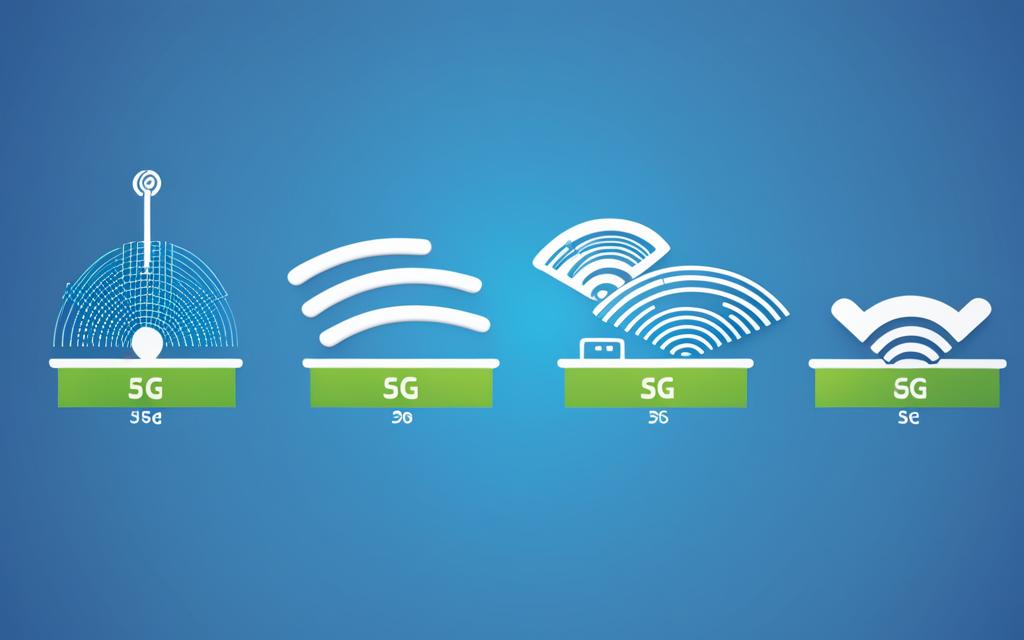
The Future Vision Enabled by 5G
The future vision for 5G is characterized by significant improvements in coverage, expanded spectrum capabilities, and an enhanced device ecosystem. These advancements pave the way for a wide range of innovative applications and transformative use cases, positioning 5G as the foundation for the next generation of wireless communication.
Improved Coverage and Network Densification
One of the key objectives of the future vision for 5G is to ensure comprehensive coverage that extends beyond traditional urban areas. With the deployment of new infrastructure and the optimization of existing networks, 5G aims to provide reliable connectivity to suburban, rural, and remote regions. This extended coverage enables connectivity for previously underserved populations and supports the seamless integration of devices and technologies across various locations.
Moreover, the future vision of 5G emphasizes the need for improved network densification. By deploying additional base stations and small cells, the network capacity and performance can be significantly enhanced. This densification allows for more efficient utilization of available spectrum, reducing congestion and providing a superior user experience.
Expanded Spectrum Capabilities and Network Slicing
As part of its future vision, 5G aims to leverage a broader spectrum portfolio, enabling higher data transfer rates, increased capacity, and reduced latency. By accessing additional frequency bands, 5G networks can accommodate the growing demand for bandwidth-intensive applications and services.
Furthermore, network slicing is a key feature of the future 5G vision, enabling the creation of dedicated virtual networks tailored to the specific requirements of different industries and use cases. With network slicing, resources such as bandwidth, latency, and security can be dynamically allocated and optimized, ensuring reliable and efficient communication for a diverse range of applications.
Emerging Applications and Edge Computing
5G unlocks a new era of technological innovation with its future vision. The increased network capacity and reduced latency offered by 5G networks enable the development and deployment of emerging applications such as autonomous vehicles, smart cities, and immersive augmented reality experiences.
Furthermore, the future vision of 5G aligns with the emergence of edge computing. By bringing data processing closer to the edge of the network, 5G networks enable real-time decision-making and low-latency interactions for mission-critical applications. Edge computing, combined with the high-speed and low-latency features of 5G, supports transformative use cases that require immediate response times and ultra-reliable connectivity.
Expanded Device Ecosystem and Enhanced User Experience
5G’s future vision also encompasses an expanded device ecosystem, enabling a wide range of devices to connect seamlessly to the network. From smartphones and wearables to IoT devices and industrial equipment, 5G supports a diverse array of devices, facilitating the growth of the Internet of Things and enabling new possibilities for connectivity and automation.
The enhanced user experience is a cornerstone of 5G’s future vision. With faster download and upload speeds, improved reliability, and reduced latency, users can enjoy seamless video streaming, high-quality video calls, and real-time interactive experiences. The future vision of 5G aims to provide users with unparalleled connectivity and empower them to fully embrace the possibilities of the digital age.
| Key Elements of 5G Future Vision | Benefits |
|---|---|
| Improved coverage | Connectivity for underserved areas, seamless integration across locations |
| Expanded spectrum capabilities | Higher data transfer rates, increased capacity, reduced latency |
| Network slicing | Optimized resources for diverse applications, tailored virtual networks |
| Emerging applications | Autonomous vehicles, smart cities, immersive AR experiences |
| Edge computing | Real-time decision-making, low-latency interactions for mission-critical applications |
| Expanded device ecosystem | Connectivity for diverse devices, growth of IoT |
| Enhanced user experience | Faster speeds, improved reliability, reduced latency for seamless digital experiences |
Conclusion
The convergence of Wi-Fi and 5G represents a significant milestone in the evolution of local area wireless networks. These technologies have demonstrated their transformative potential by addressing emerging use cases and requirements in the digital age. With its superior performance and capabilities, 5G is well-suited for mission-critical applications, while Wi-Fi continues to serve as a reliable option for consumer and office environments.
Wi-Fi 6, the latest iteration of Wi-Fi technology, is poised to play a crucial role in basic enterprise use cases, thanks to its improved performance and efficiency. Meanwhile, 5G’s future vision holds promises of enhanced network coverage, expanded spectrum capabilities, and a broader device ecosystem. This fosters the development of new applications and use cases across various industries.
The transformative potential of Wi-Fi and 5G convergence cannot be overstated. As these technologies continue to advance, they will shape the future of wireless connectivity, driving the Fourth Industrial Revolution forward. Local area wireless networks stand to benefit greatly from the seamless integration of Wi-Fi and 5G, enabling a new era of connectivity, productivity, and innovation at an unprecedented scale.
FAQ
What is the Fourth Industrial Revolution (4IR) and how is it driving the convergence of Wi-Fi and 5G?
The Fourth Industrial Revolution (4IR) refers to the transition of the world’s economy driven by technologies such as artificial intelligence, IoT, AR/VR, and more. This transition is fueled by high-speed, high-capacity, and low-latency wireless connectivity, which is where the convergence of Wi-Fi and 5G comes into play.
What is the predicted global mobile traffic by the end of 2024?
By the end of 2024, global mobile traffic is predicted to reach 131 exabytes per month. This highlights the increasing need for new networks that can support massive machine-to-machine communication and bandwidth-hungry technologies.
What are Verizon’s Eight Currencies of 5G and why are they important?
Verizon’s Eight Currencies of 5G include throughput, energy efficiency, and reliability, among others. These currencies position 5G for mission-critical use cases, time-sensitive networking, and bandwidth-hungry applications. They ensure superior quality of service, end-to-end security, and support for emerging technologies.
How does Wi-Fi 6 compare to 5G in terms of performance?
Wi-Fi 6 operates exclusively in unlicensed spectrum frequency bands, making it subject to interference in noisy environments. 5G, on the other hand, offers higher peak data rates, improved reliability, and lower latency compared to Wi-Fi 6. This makes 5G suitable for various use cases, including mobile, fixed, nomadic, indoor, and outdoor applications.
What is the future vision enabled by 5G?
The future vision for 5G includes improvements in coverage, increased spectrum capabilities, and expanded device ecosystems. These developments enable support for vertical industries, ultrareliable and low-latency communication, improved network densification, and improved indoor coverage and LAN support. 5G also paves the way for new applications and technologies like vehicle communication and edge computing.

